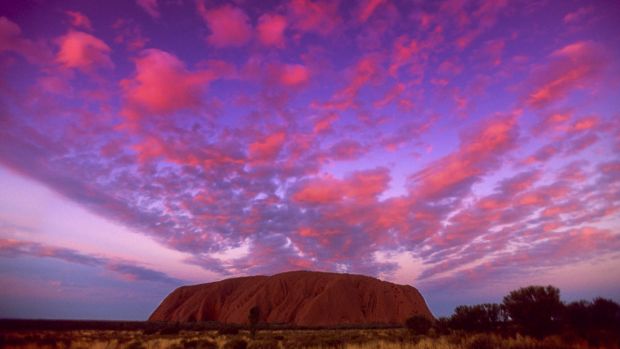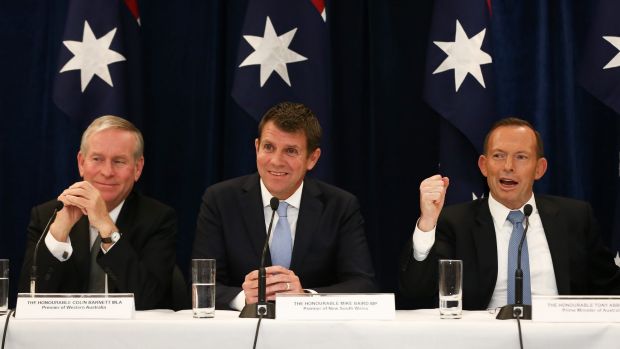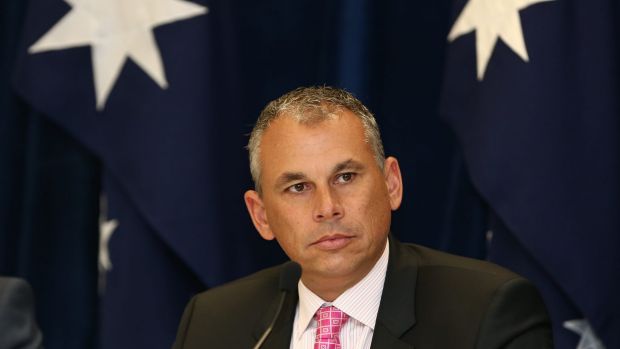23 July 2015
Sarah Whyte
WA Today
The remote territory known for its crocodiles and steamy weather might finally lose its status as “second-class citizen”, becoming the country’s seventh state.
State leaders at the Council of Australian Governments meeting on Thursday unanimously agreed with Northern Territory Chief Minister Adam Giles that the territory should become its own state by July 1, 2018, according to a communique issued by Prime Minister Tony Abbott.

Speaking from Sydney, Mr Giles said the Northern Territory was a “second class citizen” that had a “second-tier status in the nation”.
If the change occurs, Parliament House in Canberra could gain an additional number of politicians in the House of Representatives and the Senate. The state could even get a name change.
The Territory, which has a population of 243,700, currently has two senators in Canberra: Indigenous Affairs Minister Nigel Scullion and Labor’s Nova Peris. It also has two members in the House of Representatives: Labor’s Warren Snowdon and the Country Liberal’s Natasha Griggs.

Senator Peris said she backed a change, but only if it benefited everyone.
“Aboriginal land rights need to be protected, our children need to be educated, our cost of living needs to be lower and our standard of healthcare needs to be higher. That’s what statehood needs to help achieve,” she said.
But not all Australian leaders are in favour for the decision. Treasurer Joe Hockey scoffed at the idea when asked about it in Sydney on Thursday.

“Haven’t we heard this before?” he laughed.
When told that the idea had unanimous support at COAG, Mr Hockey replied: “Look, I think we had a referendum not too long ago in the NT on that specific issue and they chose not to go down that path. So we’ll leave it at that.”
Northern Land Council president Joe Morrison also raised concerns about the security of land rights for Aboriginal people, who comprise 30 per cent of the population, if a referendum was to go ahead.
“The reality is, there haven’t been any plans for [statehood] and 2018 is pretty ambitious,” he said.
“There is a number of very important questions,” he said. “It’s one thing to say we’re going to go to a referendum, but it’s another to go to the public.”
In 1998, the Northern Territory held a referendum that was defeated by a 51.3 per cent ‘no vote’.
The issue of statehood resurfaced in 2012, when Northern Territory leaders drafted a constitution that suggested the territory become a state. The plan was then put on hold.
Professor George Williams from the University of NSW said the statehood proposal was a “sensible, overdue change”.
“This is an issue that has kept popping up, but the difference this time is that they have nominated a date and that might finally invest the process with some urgency and purpose,” he said.
“Three years is not far away. What they need to do is generate popular support, draft a constitution and negotiate with the Commonwealth.”
“If you’re living in the Territory you’re treated as a second-class citizen,” he said.
And as for the new name of the state?
“There was a process they ran to ask what the new name of the state should be and the most popular name was ‘State of the Northern Territory’,” Professor Williams said.
“There were certainly some weird and wonderful suggestions including Deathstar. Surely, there is room for imagination.”
States and territories: What’s the difference?
- Territories have a limited right of self-governance granted by the federal government. Both the ACT and the NT have their own parliament to make their own laws, however, these laws can be overridden by the federal government.
- States’ powers are supported through the Constitution.
- The votes of people living in Territories are given lesser weight than votes from States in a federal referendum.
- In federal Parliament territories are represented by two Senators. States have 12.
- Territorians can be discriminated against by living in the NT or ACT because the Constitution only applies to states. For example, residents of one state cannot be discriminated against for applying for a job in another state, while people from territories do not have the same constitutional protections.
- Under section 121 of the Constitution, territories can become states with the approval of the Parliament.
- Australia has 10 territories. NT, ACT and Norfolk Island are the only territories that have their own governments.
- The seven other territories are Christmas Island, Cocos (Kelling) Islands, Jervis Bay Territory, Heard Island and McDonald Islands, Ashmore and Cartier Islands, Coral Sea Islands. These are managed by a government-appointed administrator.
Courtesy of WA Today
